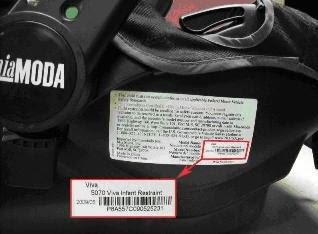- Tire Size
- Tire Tread
- Balance & Alignment
- Rotation
- Repair
Tire Size
To maintain tire safety, purchase new tires that are the same size as the vehicle's original tires or another size recommended by the manufacturer. Look at the tire information placard, the owner's manual, or the sidewall of the tire you are replacing to find this information. If you have any doubt about the correct size to choose, consult with the tire dealer.
Tire Tread
The tire tread provides the gripping action and traction that prevent your vehicle from slipping or sliding, especially when the road is wet or icy. In general, tires are not safe and should be replaced when the tread is worn down to 1/16 of an inch. Tires have built-in treadwear indicators that let you know when it is time to replace your tires. These indicators are raised sections spaced intermittently in the bottom of the tread grooves. When they appear "even" with the outside of the tread, it is time to replace your tires.
Another method for checking tread depth is to place a penny in the tread with Lincoln's head upside down and facing you. If you can see the top of Lincoln's head, you are ready for new tires. The tread on this tire covers the top of Lincoln's head, so it's not yet ready for replacement.

Balance & Alignment
To avoid vibration or shaking of the vehicle when a tire rotates, the tire must be properly balanced. This balance is achieved by positioning weights on the wheel to counterbalance heavy spots on the wheel-and-tire assembly.
A wheel alignment adjusts the angles of the wheels so that they are positioned correctly relative to the vehicle's frame. This adjustment maximizes the life of your tires and prevents your car from veering to the right or left when driving on a straight, level road.
These adjustments require special equipment and should be performed by a qualified technician.
Rotation
Rotating tires from front to back and from side to side can reduce irregular wear (for vehicles that have tires that are all the same size). Look in your owner's manual for information on how frequently the tires on your vehicle should be rotated and the best pattern for rotation.
Examples of common rotation patterns (for vehicles with tires that are the same type and size):

Repair
A plug by itself is not an acceptable repair.
Punctures through the tread can be repaired if they are not too large, but punctures to the sidewall should not be repaired.
Tires must be removed from the rim to be properly inspected before being plugged and patched.








